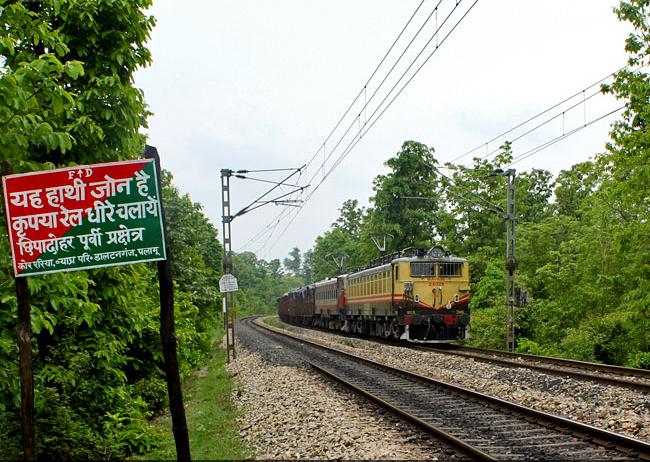Third Track in Palamu Will Ruin The Tiger Reserve
Also read: Deadly Train Tracks Threaten Tiger Corridor In MP
Citing two cases, a vision document of the state government for the revival of tiger population in Palamu said ,” The issue ( of railway third track) was raised by PTR administration and an alternative route was proposed along the periphery of PTR, so as to avoid fragmentation of core habitat. A meeting under the chairmanship of Chairman, Railway Board was held on January 13, 2020. The meeting was attended by member secretary, NTCA, ADG Wildlife. In this meeting, it was decided to undertake a survey involving the forest department, state government and Railway. The survey would look into the feasibility of laying of railway tracks along the proposed alternate route or to assess and propose any other route so as to avoid fragmentation of core habitat of PTR.”
Also read: Tiger Corridor : Now Satpuda Melghat National Parks Connectivity At Risk
It further said,” The joint survey, however, was done and railways after conducting unilateral survey in an utterly opaque manner, reported that the alternate route as proposed by PTR management is not feasible.”The issue didn’t stop here. The vision document highlighted another meeting and its outcome. The meeting was attended by senior forest department officials and those of the railways on February 2021 discussing some “bottlenecks “and their solution. “However, no communication has been received from Railways and it went ahead with its original alignment running through the core area of PTR. It has applied for Wildlife Clearance for laying of rail tracks and a proposal is pending before the State Board for Wildlife for consideration”, the document said. It also sought “intervention at government level”.
Railways Contradicts Its Green Claims
Indian railways might have been taking many green initiatives including net-zero emission by 2030 to become the world’s first 100 per cent green railway, the insistence of the conglomerate to go ahead with the railway lines in protected forest areas depicts an altogether different picture. Its claims of planting lakhs of saplings and other green initiatives, portrays a poor picture of the institution. Tracks inside the tiger reserves have already wreaked havoc, further expansion of railway lines will impact the ecology of the parks beyond imagination.
Also read: Bhopal's Urban Tigers Need Tiger Reserve Not Chain-Links Mr Chief Minister
For laying a second track in Sanjay Dubri tiger reserve , the railways cites a deal done in 1969 before the forest and wildlife conservations laws came into force when it had purchased a piece of land that later became part of the protected area of Sanjay Dubri national park. Both in Sanjay- Dubri and Palamu, the railways have been given alternatives to take out the lines outside the protected area but it is adamant to construct the iron tracks inside the national parks, contradicting its own claims of going green in the times of climate change.
Representational images , banner image courtsey: Nature inFcous




Comments
Post a Comment